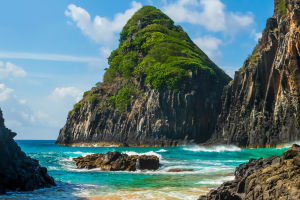Tierra del Fuego, a vast and wild archipelago at the southernmost tip of South America, offers an extraordinary blend of raw landscapes and outdoor adventures.
Stretching across more than seventy thousand square kilometers, this region captivates with its pristine wilderness, dramatic coastlines, and rich biodiversity.
Lykkers looking for an unforgettable experience immersed in nature will find Tierra del Fuego a spectacular destination with something for everyone, from breathtaking hikes to wildlife spotting and boat trips to legendary landmarks.
Where is Tierra del Fuego and How to Reach It?
Geographic Location
Tierra del Fuego sits at the very bottom of the American continent, shared between Argentina and Chile. The main islands include Isla Grande, Isla de los Estados, and Isla del Cabo de Hornos.
The northernmost point of the archipelago is Punta Anegada, while Cape Horn marks its southern extreme.
Getting There
Most visitors reach Tierra del Fuego via Ushuaia, often called the southernmost city in the world. Ushuaia is accessible by flight from major cities in Argentina, with public transport and taxis connecting the airport to town. From Ushuaia, many excursions and transport options start, including the famous "Train of the End of the World" and boat tours through the Beagle Channel.
What to See and Do
Tierra del Fuego National Park
Established in 1960, this vast park is a jewel of native forests, mountains, waterfalls, and glaciers. Visitors can explore trails leading to Lapataia Bay, and around scenic lakes like Fagnano and Roca.
The park is home to wildlife such as foxes, beavers, guanacos, and Andean condors. The park can be conveniently reached from Ushuaia by the Tren del Fin del Mundo, a historic narrow-gauge railway offering a scenic journey through forested landscapes.
Beagle Channel and Cape Horn
Boat excursions cross the Beagle Channel, a key waterway inhabited by sea lions, penguins, and numerous bird species. Many tours offer the chance to approach Cape Horn, a rocky outcrop known for its turbulent waters where Atlantic and Pacific currents meet.
This legendary cape was designated as a Biosphere Reserve in 2005, preserving its unique ecosystem. Along the way, visitors can see the iconic Les Eclaireurs Lighthouse, a popular photo stop.
Winter and Mountain Activities
Ski enthusiasts can enjoy the Cerro Castor and Glacial Martial ski areas, where slopes are nestled on glaciers offering snowy adventures during the cold season. The terrain and facilities cater to various skill levels and also provide beautiful panoramic views.
Additional Attractions
- The Lago Grey in Torres del Paine National Park (Chile) features stunning icebergs drifting from the glacier into the lake.
- Laguna Torre near the base camp of Cerro Torre offers hiking opportunities with dramatic mountain backdrops.
- The islands around Ushuaia invite nature lovers to explore remote and peaceful spots.
Cultural Sites
To understand the region's past, a visit to the Salesian Museum in Punta Arenas and the Rio Grande mission is recommended. These sites provide insight into the history and indigenous cultures that once thrived here.
When to Visit and What to Pack
Best Time to Explore
The climate is subpolar, with cool summers and cold, snowy winters—especially in the mountainous zones. From November to February, the region enjoys up to 19 hours of daylight, making this period ideal for outdoor activities and sightseeing.
Spring is considered the best time to visit due to milder weather and clearer skies.
Essential Packing Tips
Despite the cold climate, heavy woolen clothing is not always necessary. Trekking shoes, waterproof jackets (k-way), and insulated water bottles are essential for excursions. During summer months, packing swimwear is advisable for those interested in outdoor swimming or hot springs.
Opening Hours and Ticket Information
Tierra del Fuego National Park
Open year-round, with varying hours depending on the season. Entrance fees are modest, with discounts for students and seniors. Tickets can be purchased at park entrances or online for convenience.
Train of the End of the World
The train operates daily, with multiple departures. Tickets vary by class and route, and advanced booking is recommended during peak season. The ride offers informative commentary on the park's history and environment.
Boat Tours to Cape Horn
Tours generally depart from Ushuaia's port in the morning and last a full day. Prices include the boat trip, guide services, and sometimes onboard refreshments. Weather conditions can affect schedules.
Ski Areas
Opening times depend on snow conditions but usually run from June to October. Lift tickets vary in price, with options for day passes or longer stays. Equipment rental is available on-site.
Public Transport and Accessibility
Within Ushuaia
Local buses and taxis provide easy access to the main points of interest and transport hubs. Shuttle services connect the airport with central locations.
Getting to Natural Attractions
Many parks and trails require guided tours or private transportation due to remote locations. Several tour operators offer packages that include transport, guides, and entrance fees.
Special Events
Marchablanca Cross-Country Ski Race
This is the largest mass participation Nordic ski event in the region, attracting both professional athletes and families. Held annually, it highlights the area's winter sports culture and creates a festive atmosphere.
In Summary
Tierra del Fuego is a destination that merges awe-inspiring natural beauty with thrilling outdoor activities and rich wildlife encounters. From the dramatic landscapes of Tierra del Fuego National Park and Cape Horn to the vibrant marine life in the Beagle Channel, this region invites Lykkers to explore some of the southernmost corners of the planet.
Accessible yet remote, it promises unforgettable memories for those who appreciate nature's grandeur and adventure. With a well-planned itinerary and proper gear, every visit offers the chance to experience this unique wilderness to the fullest.


